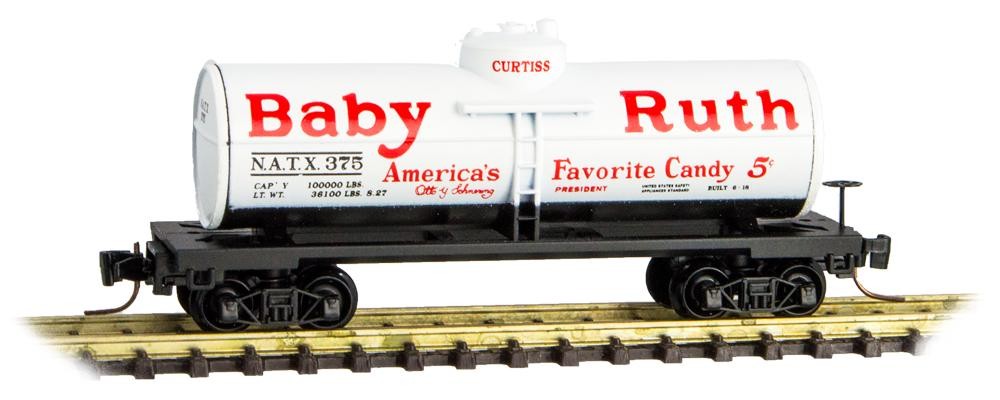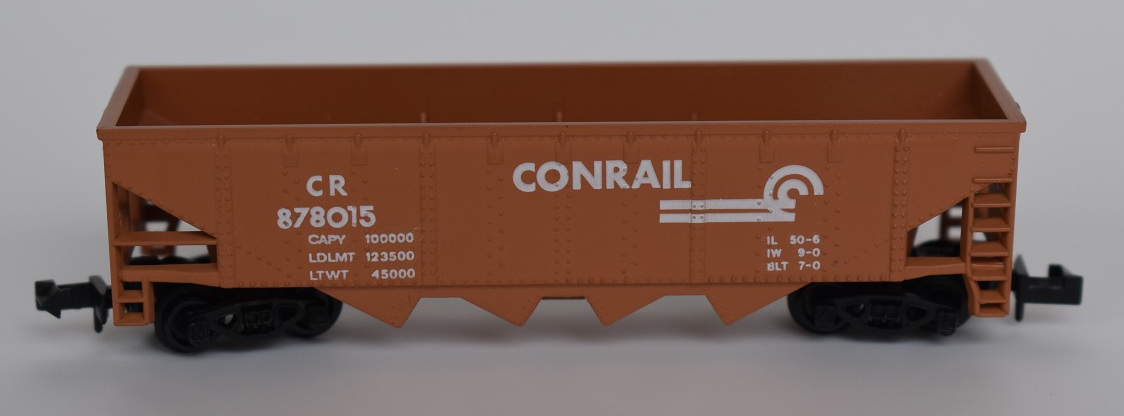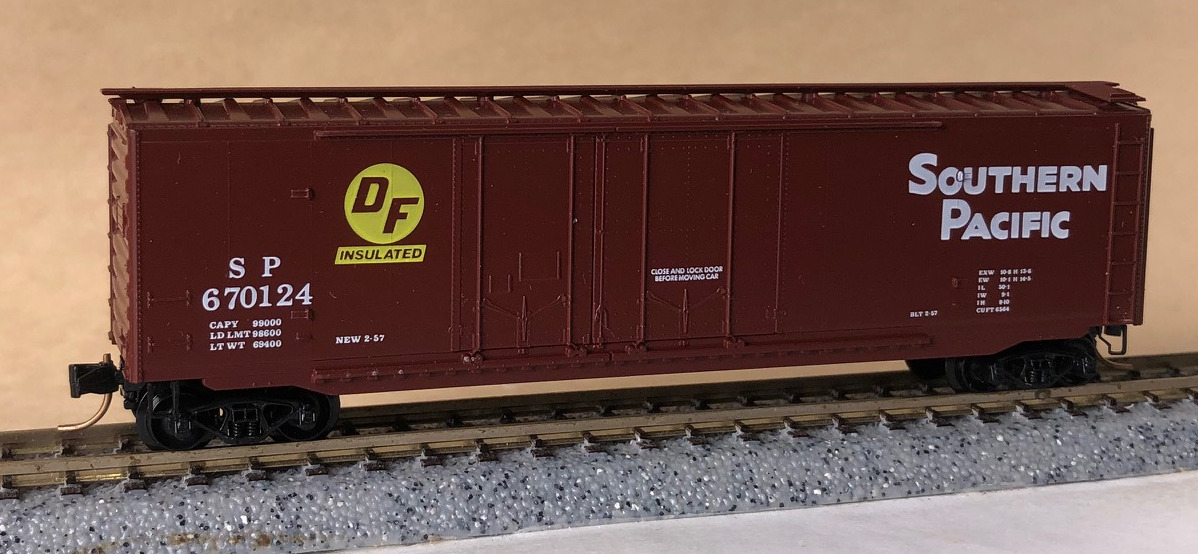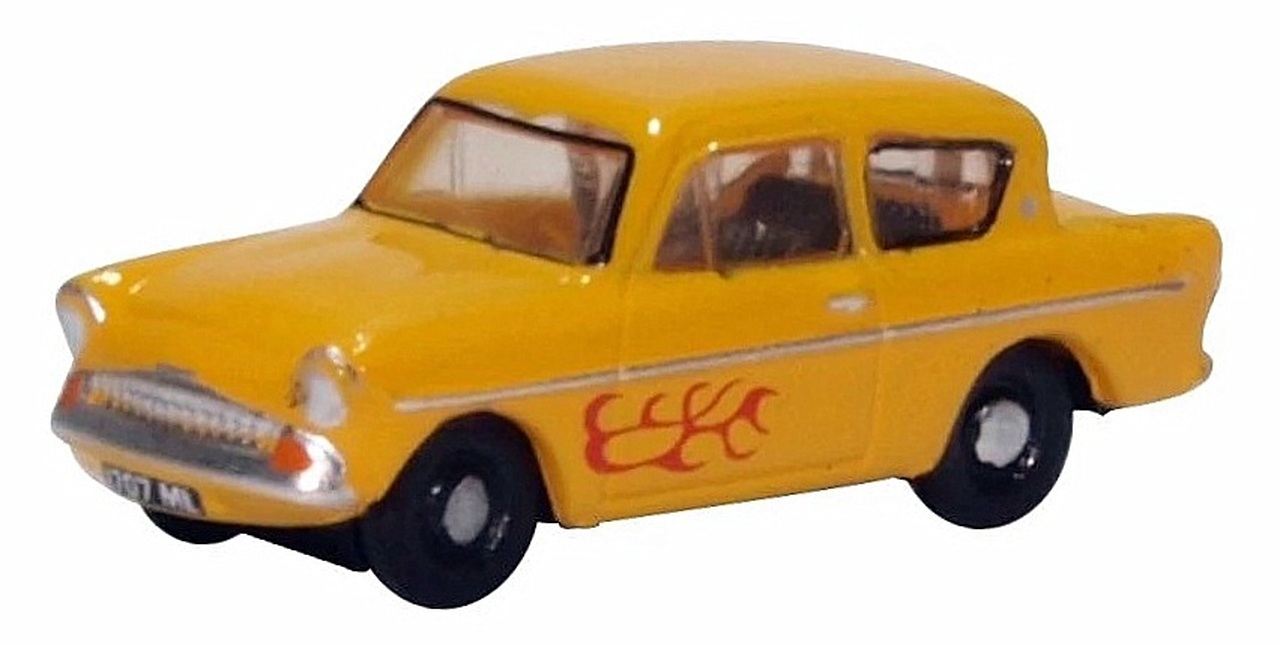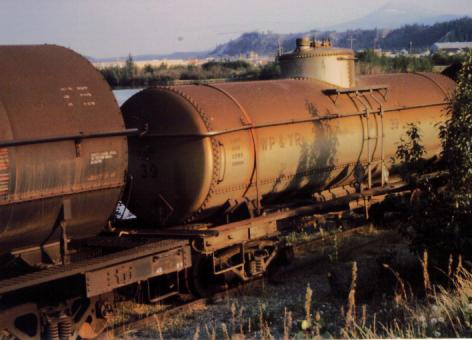Prototype History: Single Dome tank cars are a railroad staple. They have been around since the first half of the 20th century. This length car can handle about 10,000 gallons. These railcars carry a wide array of commodities, including liquid fertilizers, chemicals, fuel oils and asphalt, and food-grade oils. Tank cars can be pressurized or non-pressurized, insulated or non-insulated. Single dome cars carry only a single commodity at once. Food-service tank cars may be lined with stainless steel, glass, or plastic. Tank cars carrying dangerous goods are generally made of different types of steel, depending on the intended cargo and operating pressure. They may also be lined with rubber or coated with specialized coatings for tank protection or product purity purpose. The tank heads are also stronger to prevent ruptures during accidents.
One common version is the ACF Type 27 jacketed tank car with expansion dome which was in common use by many railroads and oil companies.
One common version is the ACF Type 27 jacketed tank car with expansion dome which was in common use by many railroads and oil companies.
Road Name History: 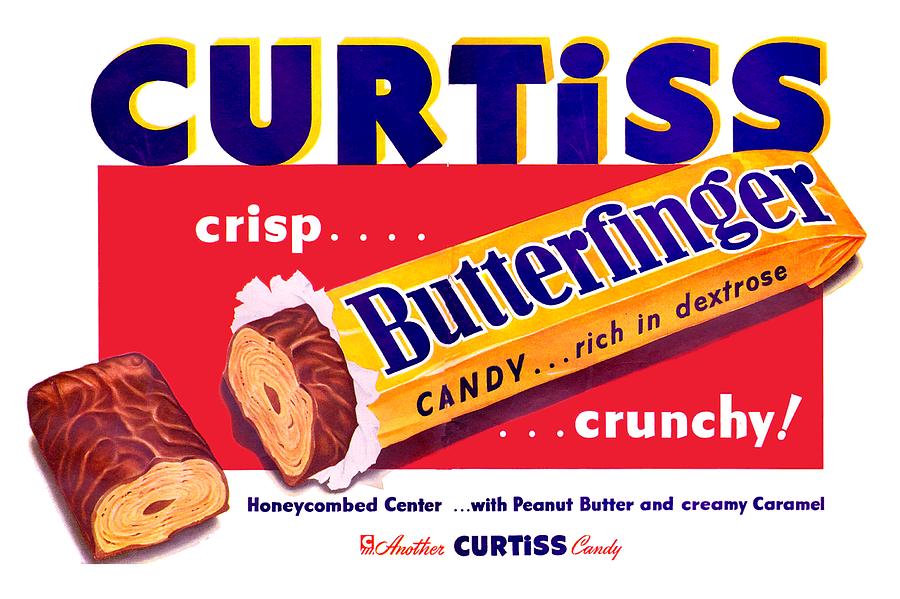 The Curtiss Candy Company was founded in 1916 by Otto Schnering near Chicago, Illinois. Wanting a more "American-sounding" name (due to anti-German sentiment during World War I), Schnering named his company using his mother's maiden name.
The Curtiss Candy Company was founded in 1916 by Otto Schnering near Chicago, Illinois. Wanting a more "American-sounding" name (due to anti-German sentiment during World War I), Schnering named his company using his mother's maiden name.
Their first confectionery item was Kandy Kake, later refashioned in 1920 as the log-shaped Baby Ruth. Their second confectionery item was the chocolate-covered peanut butter crunch Butterfinger, which was introduced in 1926. In 1931, Curtiss marketed the brand by sponsoring famous air racer, John H. Livingston, in the Baby Ruth Aerobatic Team flying the air-racer Howard "Mike" at airshows, and sponsoring Livingston's Monocoupe racer in the 1934 MacRobertson Air Race. The Jolly Jack candy was included in army rations during World War II.
In 1964, Standard Brands purchased Curtiss Candy Company. Standard Brands merged with Nabisco in 1981. In 1990, RJR Nabisco sold the Curtiss brands to Nestlé. Ferrero acquired Nestlé USA's confectionery brands, including Baby Ruth, in 2018. Ferrero folded production of the acquired brands into the Ferrara Candy Company.

Their first confectionery item was Kandy Kake, later refashioned in 1920 as the log-shaped Baby Ruth. Their second confectionery item was the chocolate-covered peanut butter crunch Butterfinger, which was introduced in 1926. In 1931, Curtiss marketed the brand by sponsoring famous air racer, John H. Livingston, in the Baby Ruth Aerobatic Team flying the air-racer Howard "Mike" at airshows, and sponsoring Livingston's Monocoupe racer in the 1934 MacRobertson Air Race. The Jolly Jack candy was included in army rations during World War II.
In 1964, Standard Brands purchased Curtiss Candy Company. Standard Brands merged with Nabisco in 1981. In 1990, RJR Nabisco sold the Curtiss brands to Nestlé. Ferrero acquired Nestlé USA's confectionery brands, including Baby Ruth, in 2018. Ferrero folded production of the acquired brands into the Ferrara Candy Company.
Brand/Importer Information: Micro-Trains Line split off from Kadee Quality Products in 1990. Kadee Quality Products originally got involved in N-Scale by producing a scaled-down version of their successful HO Magne-Matic knuckle coupler system. This coupler was superior to the ubiquitous 'Rapido' style coupler due to two primary factors: superior realistic appearance and the ability to automatically uncouple when stopped over a magnet embedded in a section of track. The success of these couplers in N-Scale quickly translated to the production of trucks, wheels and in 1972 a release of ready-to-run box cars.
Micro-Trains Line Co. split off from Kadee in 1990 to form a completely independent company. For this reason, products from this company can appear with labels from both enterprises. Due to the nature of production idiosyncrasies and various random factors, the rolling stock from Micro-Trains can have all sorts of interesting variations in both their packaging as well as the products themselves. When acquiring an MTL product it is very important to understand these important production variations that can greatly enhance (or decrease) the value of your purchase.
Micro-Trains Line Co. split off from Kadee in 1990 to form a completely independent company. For this reason, products from this company can appear with labels from both enterprises. Due to the nature of production idiosyncrasies and various random factors, the rolling stock from Micro-Trains can have all sorts of interesting variations in both their packaging as well as the products themselves. When acquiring an MTL product it is very important to understand these important production variations that can greatly enhance (or decrease) the value of your purchase.
Item created by: petecduffy on 2019-08-31 12:02:31. Last edited by gdm on 2020-10-25 16:40:40
If you see errors or missing data in this entry, please feel free to log in and edit it. Anyone with a Gmail account can log in instantly.
If you see errors or missing data in this entry, please feel free to log in and edit it. Anyone with a Gmail account can log in instantly.


